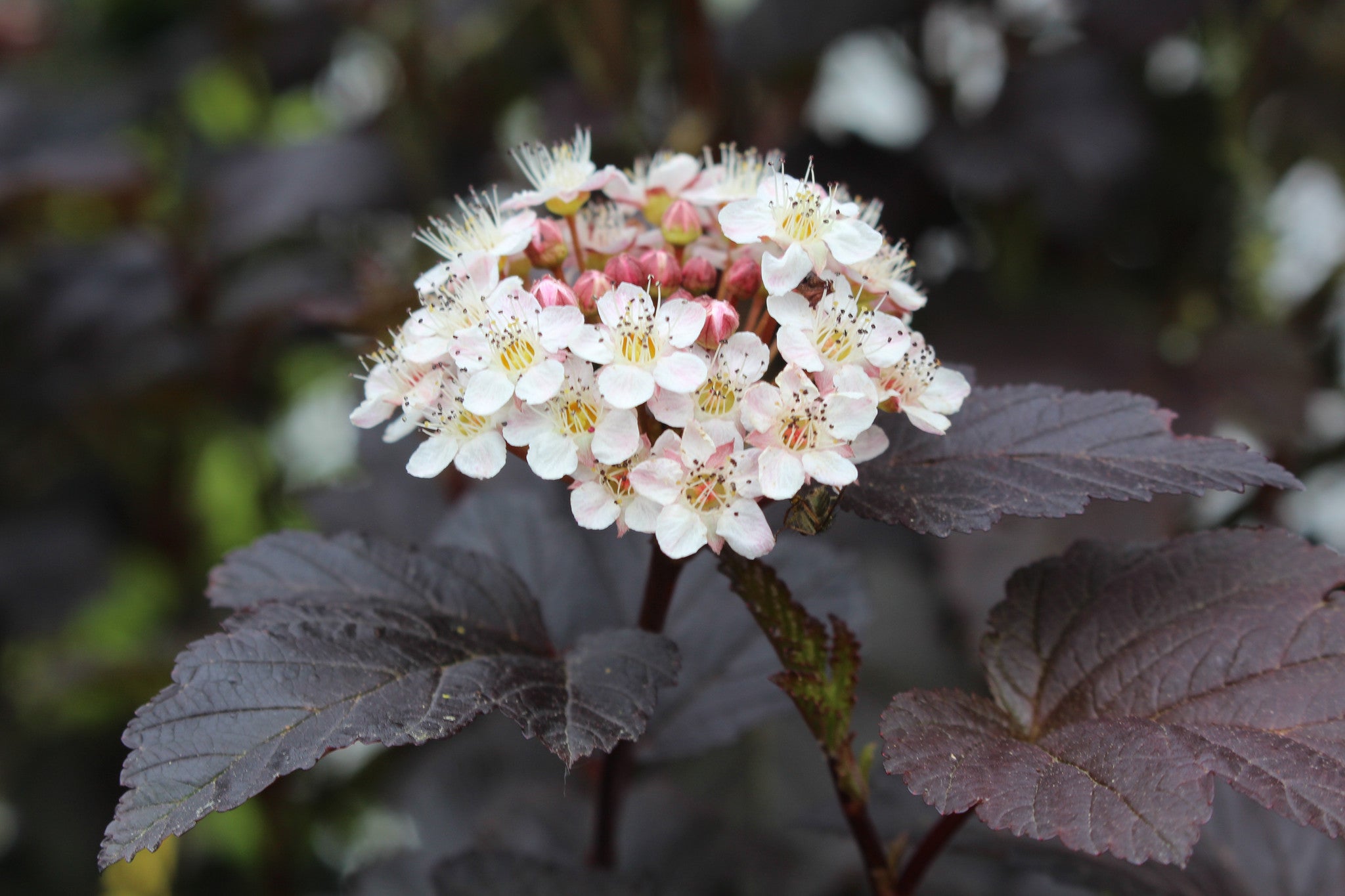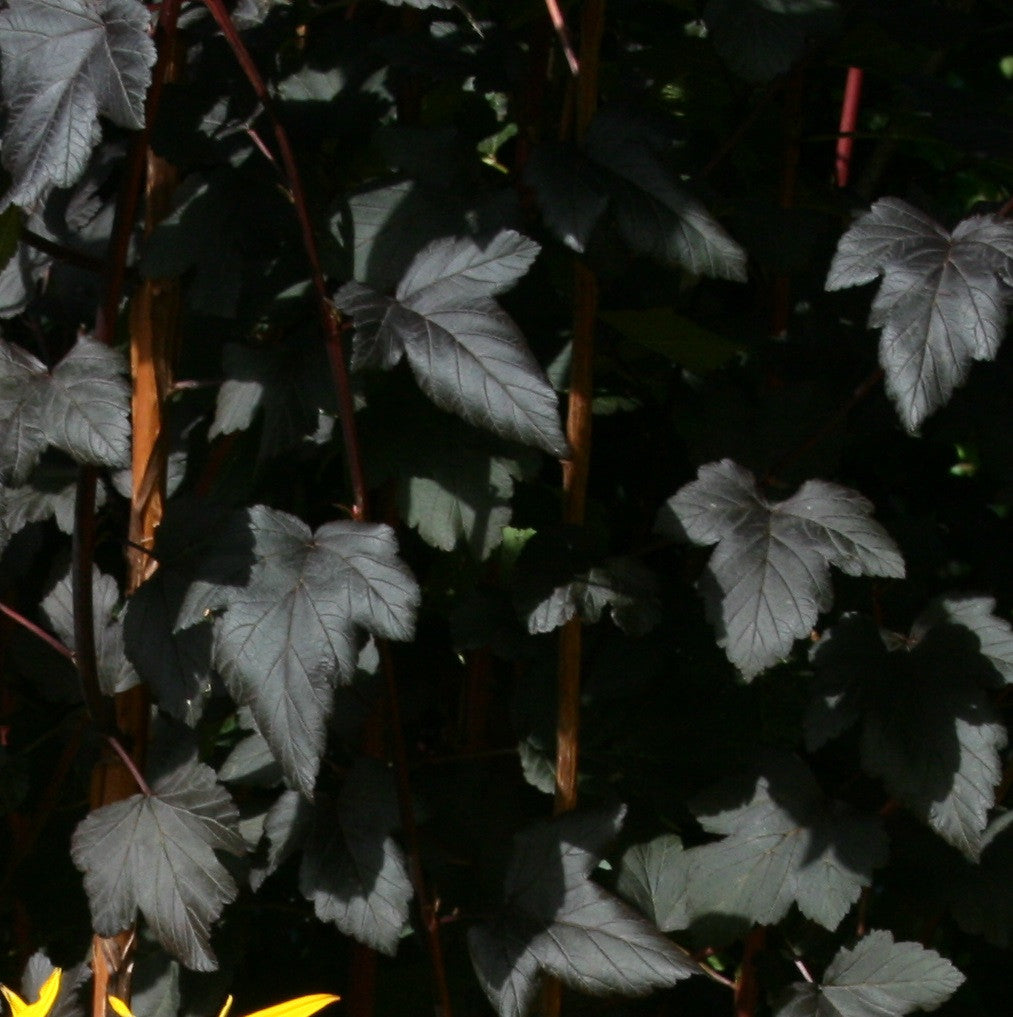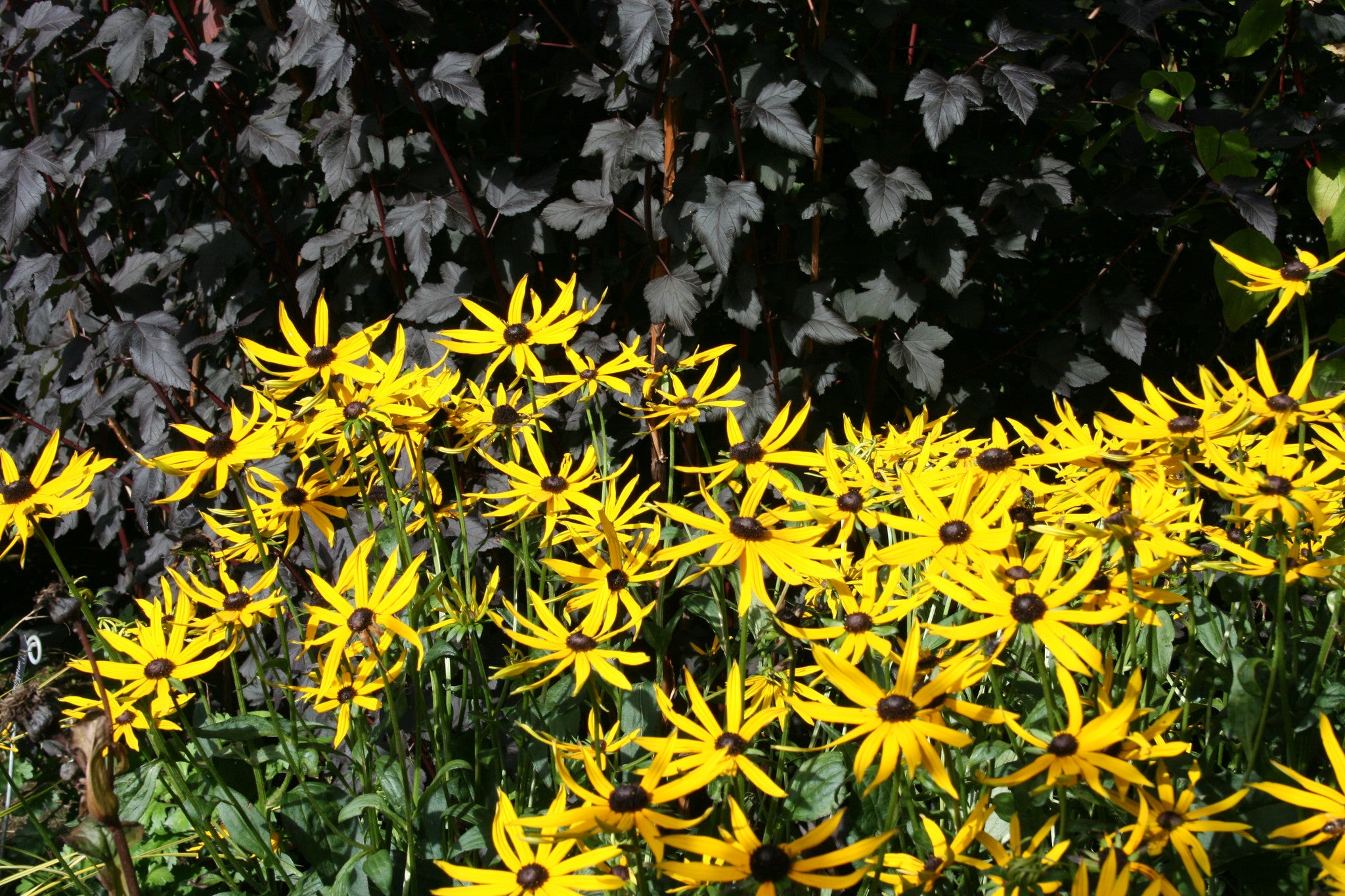Physocarpus opulifolius 'Diabolo'
Approx. 0.5 litre pot
About this cultivar:
Physocarpus opulifolius 'Diabolo' has it all: superlative colour, appealing form, and good looks that last all year long. The main claim to fame for ‘Diablo’ (which means devil in Spanish) is the deep burgundy colour of its maplelike foliage, and unlikesoem dark foliage plants, it doesn’t get greener with the onset of summer heat. That colour veers toward bronzy red by the time the leaves fall in late November. ‘Diablo’ also boasts pink-tinged white flowers, which appear in June in clusters that eventually form red seed clusters.
- Position: Full sun, partial shade
- Soil: Almost any soil, grows well in Ballyrobert
- Flowers: June, July
- Other features: Bees and Butterflies, Interesting Foliage or Fruit
- Hardiness: Fully hardy, grows well in Ballyrobert
- Habit: Suckering, bushy
- Foliage: Deciduous
- Height: 135 - 165 cm (4.5 - 5.5 ft)
- Spread: 135 - 165 cm (4.5 - 5.5 ft)
- Time to full growth: 5 to 10 years
- Plant type: Shrub
- Colour: White, black, purple
- Goes well with: --
About this genus:
Physocarpus (fy-so-car-pus), commonly called ninebark, is a genus of flowering plants in the rose family (Rosaceae), native to North America and northeastern Asia.The genus name Physocarpus comes from the Greek for bladder fruit, referring to the inflated fruits of some species.The common name ninebark refers to the peeling bark of mature branches, which comes away in strips.
Physocarpus are deciduous shrubs with alternately arranged leaves. The inflorescence is a cluster of bell-shaped flowers with rounded white or pink petals. Anywhere eye catching masses of foliage are needed, Physocarpus can fit the bill. With a leafy, casual look, Physocarpus presents luscious leaves, distinctive tight clusters of small flowers, and earthy red pillow-shaped fruit along their stems. These cold tolerant, plants possess a durable, yet alluring bent, in almost any situation that isn't waterlogged or fully shaded. If you need a smaller specimen, cutting Physocarpus to the ground in early spring will result in a flush of even darker foliage and, of course, a more compact shrub.
What to plant with? Well, we think it makes an outstanding background or canvas for white, yellow, orange and red flowers. Some ipairings from our garden include Rudbeckia, Lupinus, and Chrysanthemum.






